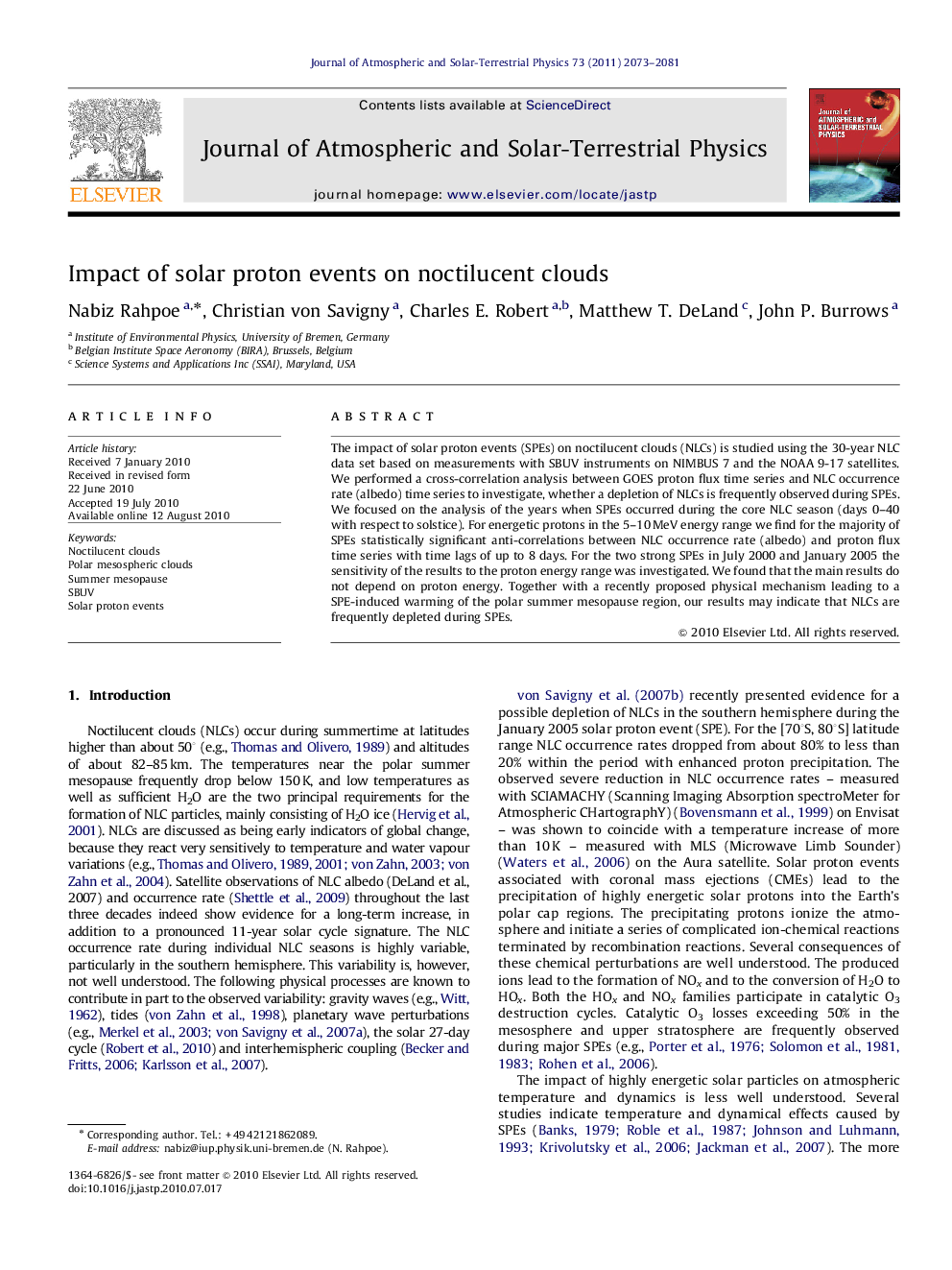| Article ID | Journal | Published Year | Pages | File Type |
|---|---|---|---|---|
| 8141040 | Journal of Atmospheric and Solar-Terrestrial Physics | 2011 | 9 Pages |
Abstract
The impact of solar proton events (SPEs) on noctilucent clouds (NLCs) is studied using the 30-year NLC data set based on measurements with SBUV instruments on NIMBUS 7 and the NOAA 9-17 satellites. We performed a cross-correlation analysis between GOES proton flux time series and NLC occurrence rate (albedo) time series to investigate, whether a depletion of NLCs is frequently observed during SPEs. We focused on the analysis of the years when SPEs occurred during the core NLC season (days 0-40 with respect to solstice). For energetic protons in the 5-10Â MeV energy range we find for the majority of SPEs statistically significant anti-correlations between NLC occurrence rate (albedo) and proton flux time series with time lags of up to 8 days. For the two strong SPEs in July 2000 and January 2005 the sensitivity of the results to the proton energy range was investigated. We found that the main results do not depend on proton energy. Together with a recently proposed physical mechanism leading to a SPE-induced warming of the polar summer mesopause region, our results may indicate that NLCs are frequently depleted during SPEs.
Related Topics
Physical Sciences and Engineering
Earth and Planetary Sciences
Geophysics
Authors
Nabiz Rahpoe, Christian von Savigny, Charles E. Robert, Matthew T. DeLand, John P. Burrows,
